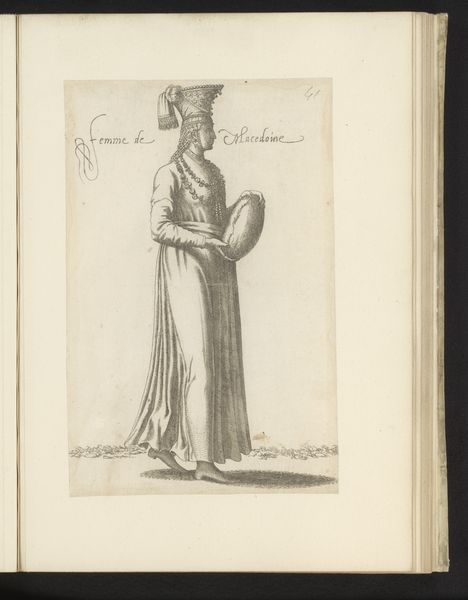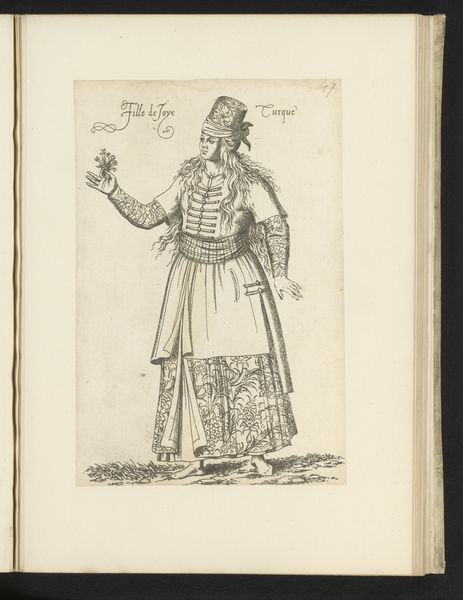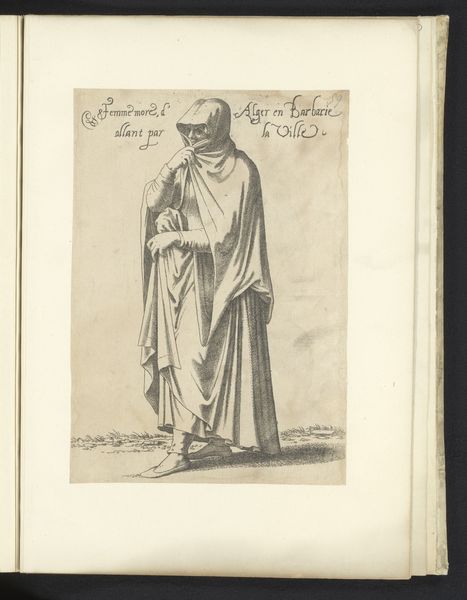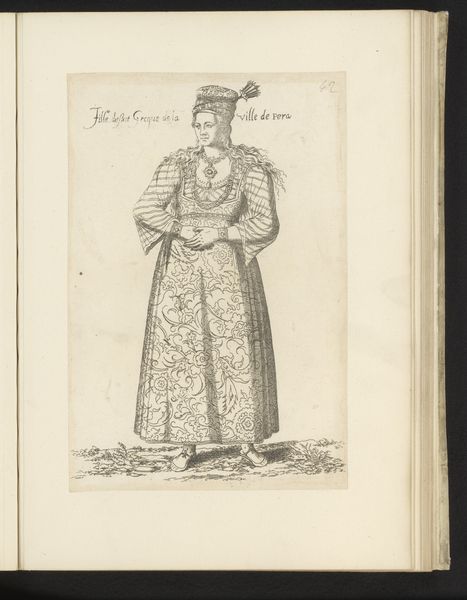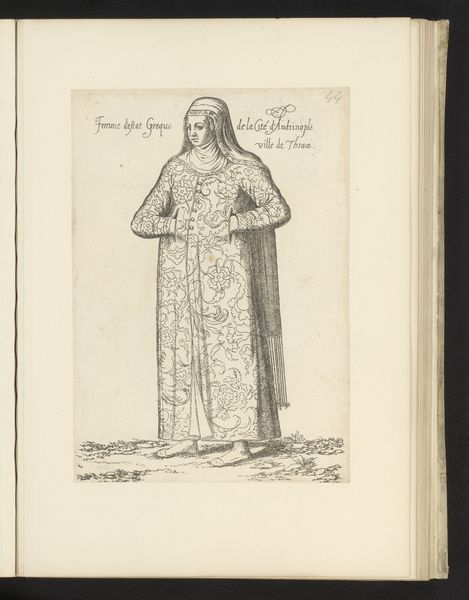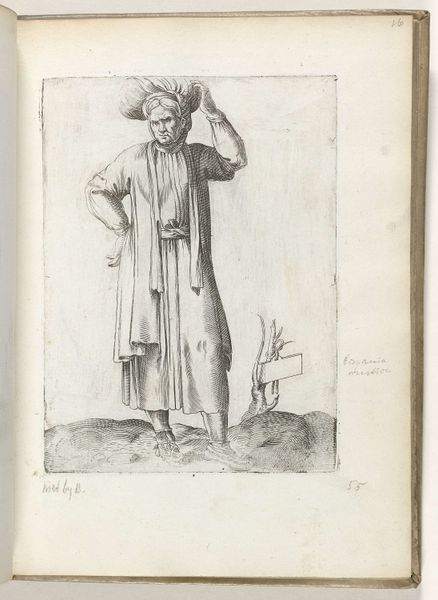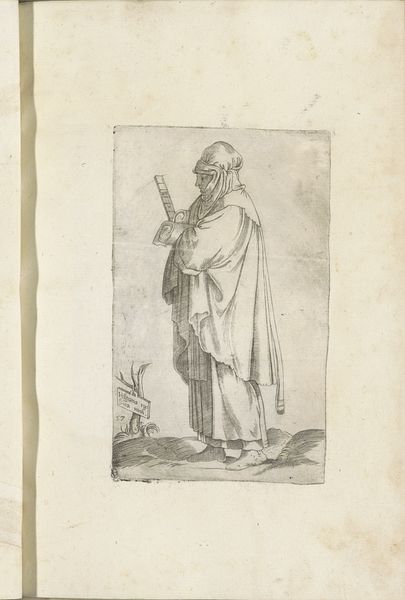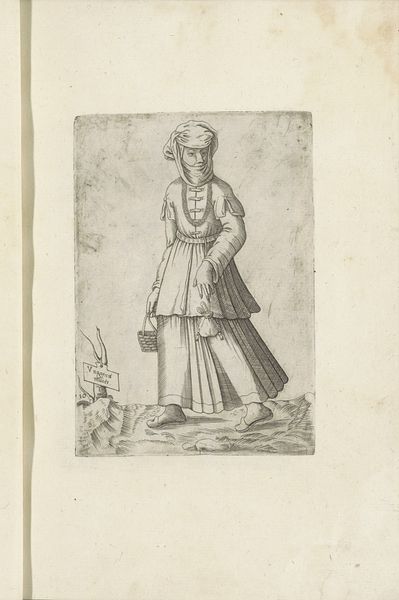
drawing, print, ink
#
portrait
#
drawing
# print
#
pen illustration
#
pen sketch
#
sketch book
#
11_renaissance
#
personal sketchbook
#
ink
#
ink drawing experimentation
#
pen-ink sketch
#
pen work
#
sketchbook drawing
#
storyboard and sketchbook work
#
sketchbook art
Dimensions: height 274 mm, width 172 mm
Copyright: Rijks Museum: Open Domain
Editor: Here we have "Perzische Vrouw," or "Persian Woman," an ink drawing from the late 16th century by Léon Davent. It's rendered with incredibly fine lines; the details of the dress are amazing. What jumps out to me is the figure’s expression – a kind of quiet dignity. What strikes you about this piece? Curator: The term "Persian Woman" tells us less about the actual sitter and more about the European imagination in the Renaissance. How was the "Orient" constructed, especially for courtly audiences and collectors? Consider the power dynamics at play. Prints like these circulated widely, and functioned like visual records that perpetuated specific narratives, in this case perhaps a romanticizing of "exotic" cultures. How do you see the relationship between this image and the societal attitudes of the time? Editor: That’s a great point! It feels like a representation of power and perhaps, misrepresentation or exoticization. Does the artist’s technique further emphasize this impression? Curator: Indeed. The highly stylized linework and the attention to specific details like the headdress would likely have been seen as markers of cultural difference, appealing to the viewers interest in what they deemed "foreign." Think of the Medici court and their keen interest in collecting things from abroad, this artwork may tap into the same socio-economic context. What story do you think it told *then*, versus the one we read now? Editor: I imagine back then, it might have represented a curiosity or almost a trophy of knowledge, reinforcing European superiority. Now, it raises complex issues of representation and cultural appropriation. Thanks for highlighting the context that shapes our perceptions. Curator: And thank you for noting how its impact has changed through the centuries. These old drawings and prints never simply *are*; they’re actively made and re-made with each encounter.
Comments
No comments
Be the first to comment and join the conversation on the ultimate creative platform.
